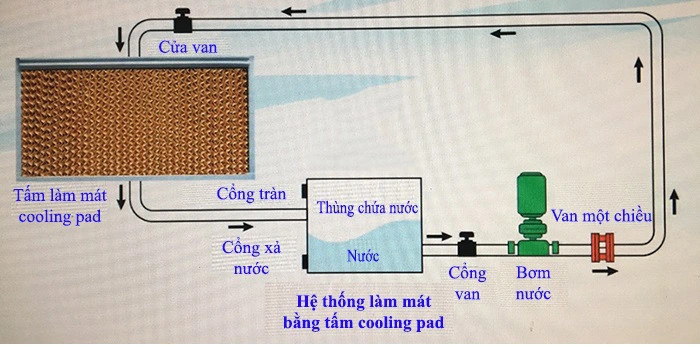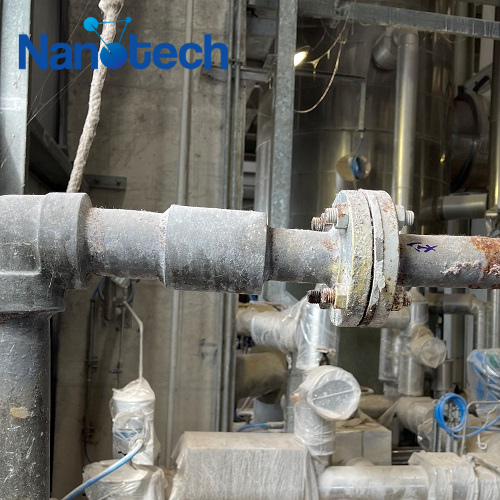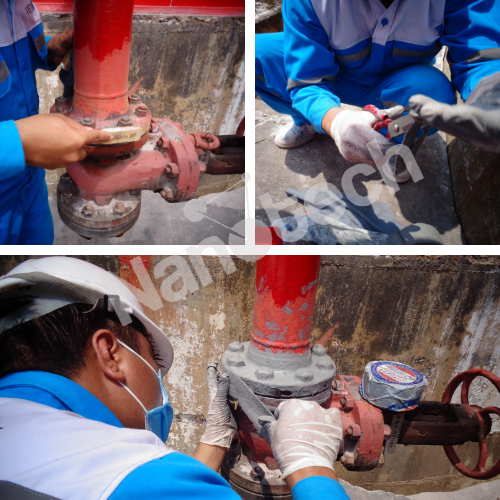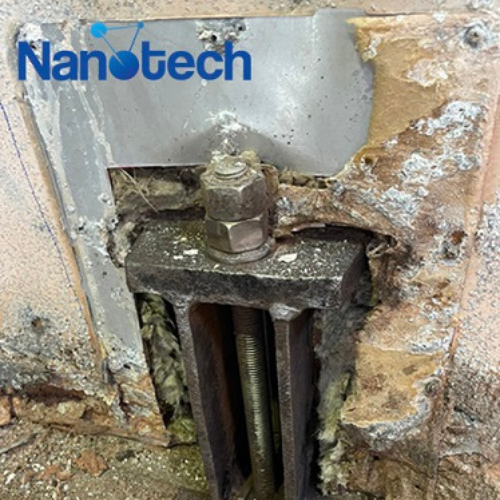
Industrial cooling system is a cooling system with large capacity. It has the effect of reducing the workplace temperature of workers in the factory.
Normally when installing this system, the temperature in the work area will be about 10 degrees lower than outside. This will help workers feel comfortable while working, helping to increase labor productivity.
Furthermore, it also helps remove dust and pollutants to ensure the health of workers
A complete industrial cooling system will include components such as:
| ✅ Cooling unit | ⭐ Coolers, cooling pads,… |
| ✅ Cooling device | ⭐ Containers, tanks,… |
| ✅ Transportation system | ⭐ Pipes, fans, air vents,… |
| ✅ Distribution channel | ⭐ Pumps, valves,… |
How does industrial cooling system work?
In reality, when the entire industrial cooling system operates, it will follow the following cycles:
- Industrial coolers (industrial steam fans) operate to cool the steam in the workshop. This creates a temperature difference between inside and outside the factory. Then the outside temperature will pass through the Cooling Pad to lower the temperature and enter the workshop;
- Also during operation, the water cooling device or cooling tank is responsible for keeping the water temperature stable. When the water temperature is stable, it will increase the cooling effect of the air;
- The pump will be responsible for pumping water through the pipeline system to evenly permeate the Cooling Pads to cool the air coming in from outside the workshop.
- The pipeline system will maintain the function of carrying cooled air from the workers’ working positions. Then the cooled air will circulate evenly throughout the workshop;
- The air vent will take all the cooled air in the workshop out to create a new operating cycle.
Advantages of using a cooling system
Using industrial cooling systems to replace current traditional cooling methods will bring outstanding advantages such as:
- Energy saving: This is a cooling method that can help investors save costs much better than using industrial fans or air conditioners.
- Natural cooling mechanism: Using air and cooling water will help workers feel much more comfortable than using air conditioning. Air conditioning systems can also dry out the skin or cause discomfort
- Limiting pollution, smoke, and dust in the workplace: With continuous air exchange, the industrial cooling system will bring polluted dust and smoke from workers’ work outside and absorb new air. from outside in
- Reduce temperature quickly and effectively: Using this system for production workshops will help reduce the temperature at the workers’ workplace by ~10 degrees Celsius.
Application of industrial cooling systems in practice
In fact, installing industrial cooling systems is an inevitable need for businesses with employees. This will help workers work comfortably and increase labor efficiency.
Here are some applications of industrial cooling systems such as:
- Processing workshop: Garment, dyeing, plastic, shoes, electroplating, electronics, printing, food packaging…
- Manufacturing workshop: Knitting, machinery manufacturing, metallurgy, chemicals, leather, ceramics…
- Public places: Shopping centers, hospitals, bus stations, stadiums, exhibition halls, restaurants, hotels…
- Farms: ornamental plants, cattle, poultry, and seafood farms.
Colling Tower area in the cooling system
A “Cooling Tower Area” is where industrial or commercial cooling systems use cooling towers to provide cooling for industrial processes or other large systems. Below is some information related to this area:
Cooling Tower: This is a type of industrial equipment used to transport heat from an industrial system or process using water as a cooling medium. Water is supplied into the cooling tower and is then sprayed out and exposed to cold air to load heat and cool the water before it is returned to the system or industrial process. As a result, the temperature of the water drops.
Main function: Cooling Tower area mainly exists to support cooling tower operations. Important jobs in this area include providing cooling water, maintaining cooling tower equipment, controlling water temperature and pressure in the tower, and performing any maintenance or repair services needed set.
Safety and Maintenance: Cooling Tower areas often require strict compliance with industrial safety codes because cooling towers and water systems can create risks related to temperature, pressure and chemicals. Regular maintenance and periodic technical inspections are important to ensure the safe and efficient operation of the cooling tower.
Environment: Treating the water from the cooling tower to ensure it does not pollute the environment is also an important factor. Many Cooling Tower sites need to comply with environmental regulations and take measures to control water and chemical discharges.
Cooling Tower areas are often located in factories, workshops, large commercial buildings, or in other industrial facilities with large cooling needs.
Reference article:
- CAUSES AND ANTI-CORROSION SOLUTIONS FOR PIPEES
- APPLICATION OF ANTI-CORROR TAPE – PROTECTING CURRENT MARINE WORKS
- 04 POPULAR TYPES OF ANTI-CORROR TAPE IN INDUSTRY
NANOTECH VIETNAM JOINT STOCK COMPANY
Address: No. 1747 Vo Nguyen Giap, Ward 12, Vung Tau City, Ba Ria – Vung Tau Province, Vietnam
Phone: 0254.3515.786 – 0778.828.879
Email: info@nanotechvietnam.com





